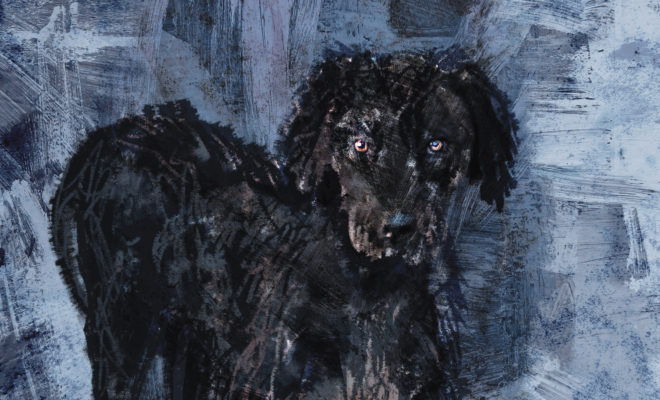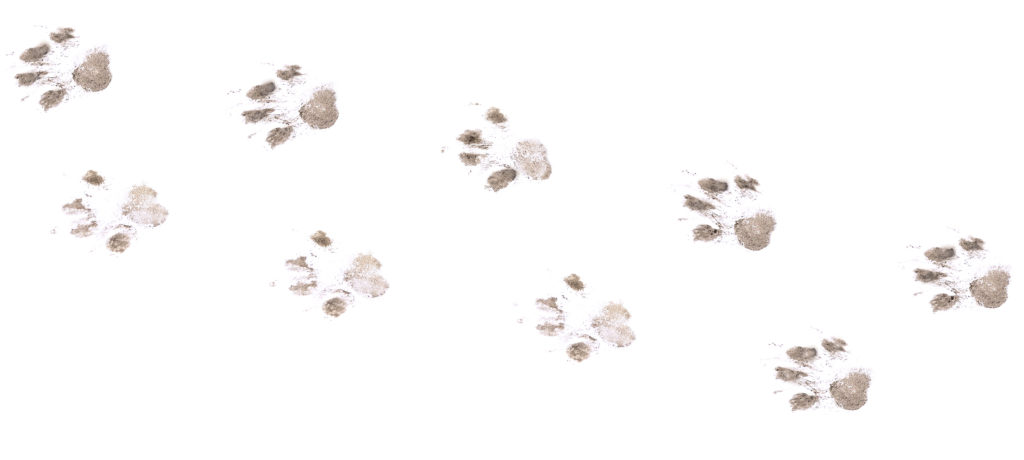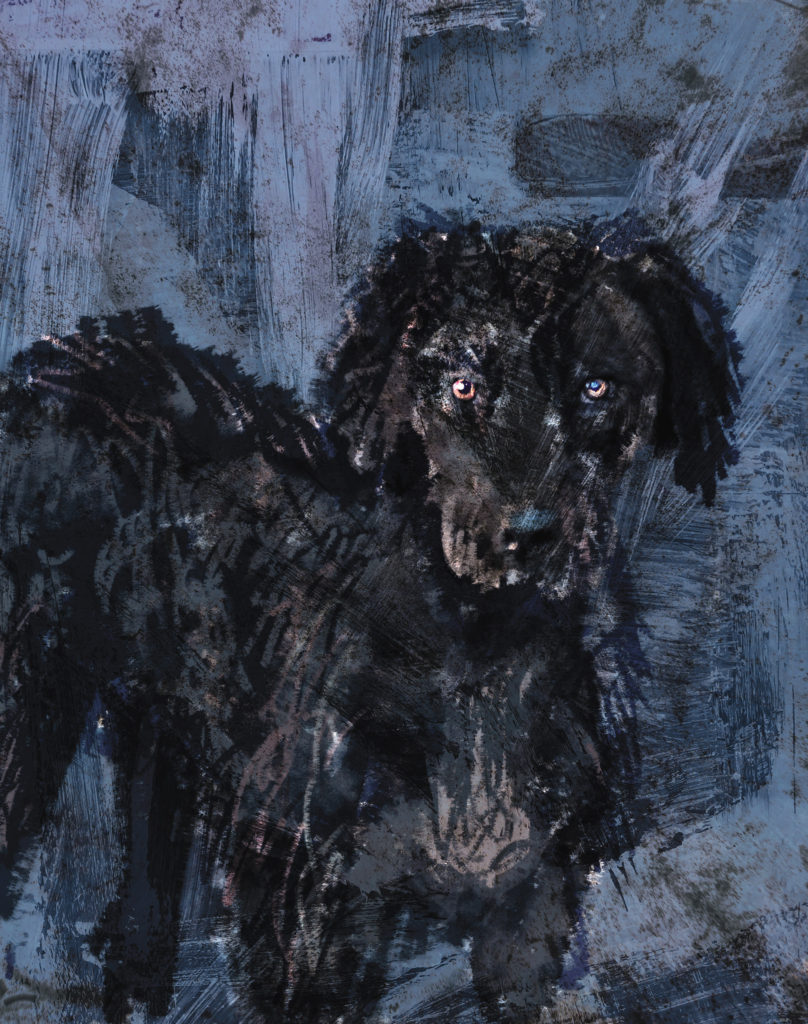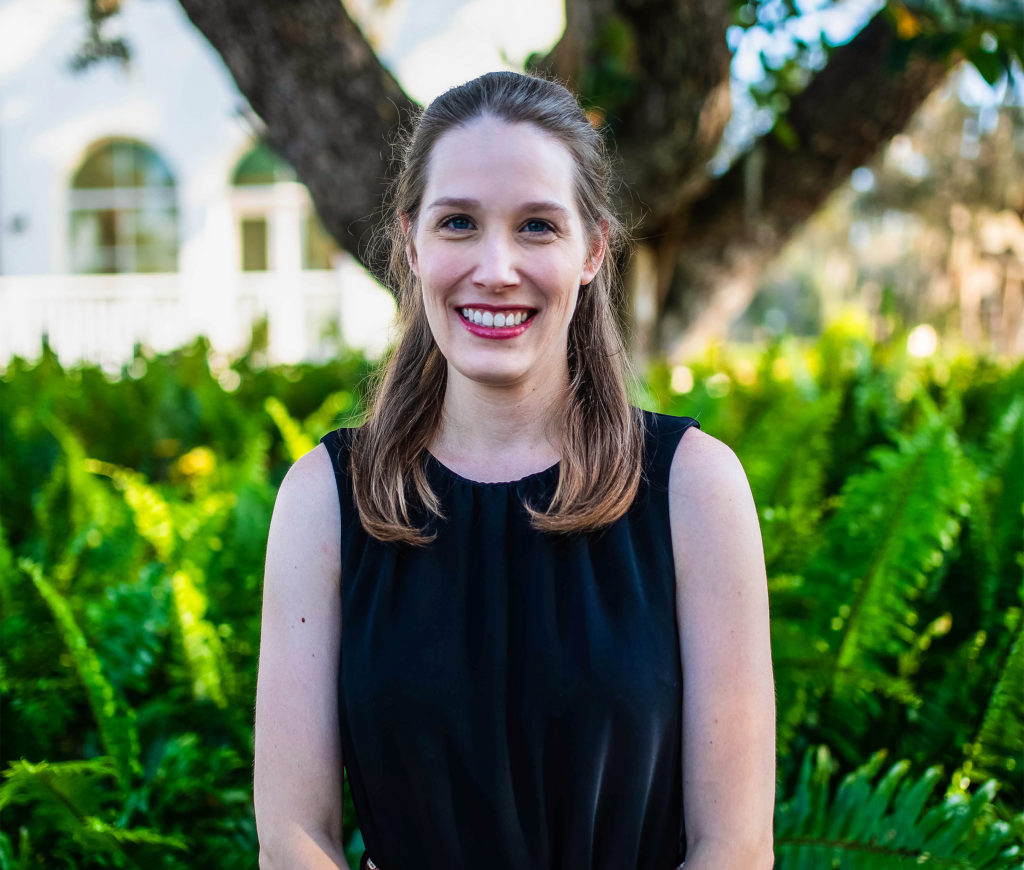
Arts & Culture
Beach Reads: The Stray
By Grier Ferguson | Illustration by Darcy Kelly-Laviolette | July 2022
He was older than he should have been.
Maybe it was the beard. Or the summer he had spent in Haiti. Or the fact that as a philosophy major in college he had spent four years studying the thoughts of men who had been dead for centuries.
But it was what it was. Neal was an old 23.
And that, he thought, was part of the reason why he was here this morning. Part of the reason why he was not sleeping in after a night out with friends like other guys his age. Being an old 23 was part of the reason why instead he was out on the streets of Detroit on a Saturday morning in late August, counting the number of stray dogs he spotted as they limped by or scurried from one overgrown lawn to another.
Neal had moved to the city three months ago, and already he was in love.
He loved the abandoned factories—relics of an age when cars were king and The Motor City was a capital of industry. He loved the old clapboard houses he could tell used to be the pride of the neighborhood, now abandoned and marked by rotting wood and peeling paint. He even loved the medians, with grass grown high because the city had run out of money to pay a maintenance crew to mow them. Sad sights, but Neal loved them all because he was sad, too.
After college graduation, he drifted from small job to small job, not knowing what he wanted to do with his degree in philosophy, and employers not knowing what to do with someone who had majored in something that everyone, including his parents, had warned him was impractical.
It was all too cliché, really. The philosophy grad who couldn’t find a real job, a real career, a real path, a real future. But knowing it was a tried-and-true cliché didn’t help Neal feel any better. It just made things worse.
He thought about moving to New York or Boston and trying to get a job with a think tank or a non-profit. Something that would at least vaguely use his philosophy degree. But those glistening cities with their glistening people and lit-up nights and shiny black sedans seemed too much to bear. Detroit matched his mood.
So, he moved into a small apartment overlooking a run-down public park and got a job as a waiter at a restaurant downtown. He liked talking to the customers, liked taking their orders and bringing them food on a big circular tray he had learned to carry above his head. He loved their faces when he placed a steaming plate of bacon and eggs or spaghetti and meatballs in front of them, loved how they smiled, loved how much they seemed to enjoy eating something so simple.
In his free time, Neal had started volunteering with the Detroit branch of the Michigan Humane Society. He had seen an advertisement in the newspaper calling for people to help them count stray dogs on the street, and he had answered the call.
He threw himself into his work at the restaurant and the humane society, hoping a life plan would rise to the surface as he tallied dogs, as he sweated through his flannel shirt, as the sun beat down on him, as he brought breakfast to the people at table six, as he went to bed at night dreaming about philosophy.
“There’s one!” shouted a middle-aged woman in a floral caftan that was much too nice to be worn on the occasion of counting strays.

Neal looked up, spotted the dog, and then marked it down on the piece of paper on his clipboard. There was such a strange sense of success each time they spotted a stray. A sense of accomplishment, like a skilled birder seeing for the first time a bird he had been searching for his entire life, lowering the binoculars from his eyes, and nodding to himself in silent admiration of his most breathtaking discovery yet.
Yes, there were the minutes that dragged on when they didn’t see any dogs and there was nothing to tally, moments of searching, of scanning the skyline for anything that was moving. But those minutes were worth it if they were able to mark down just one dog.
The more experienced Neal became in counting strays, the more he knew what to look for. Sometimes it was just a flash, a moment of movement near the edge of his line of sight. The first day, he had ignored those flashes, let other people call them out and mark down the dogs, but now when he saw one, he whipped his head around and tried to catch the dog in his sight before it ran with all its starving might behind another house. He had learned to trust his peripheral vision.
“There!” the caftaned woman yelled.
Neal turned to where she was pointing, but too late. He did not see a dog, but he knew the woman was never wrong. She was the best volunteer stray dog spotter the Detroit branch of the Michigan Humane Society had, so when she said “there!” you knew a dog was lurking somewhere in the distance where her cherry red fingernail was pointing.
But to mark down a dog on the tally sheet, Neal had to see the dog himself. Each dog spotter worked in a pair—one caller and one marker. For a dog to be counted, it had to be seen by both spotters to prevent mislabeling of feral cats and raccoons as stray dogs. So, Neal started walking in the direction she indicated.
He looked back. The woman held her hand over her eyes, shielding them from the sun and watching as Neal moved closer to where she had seen the dog.
The house in front of him looked abandoned. They were not allowed to trespass; they were supposed to stay on public property. But Neal could tell no one had lived there for years. A front window had been smashed open and glass was scattered on the porch beneath it. A trash can was knocked sideways next to the front door. Neal stepped off the sidewalk and into the yard.
“It’s okay,” the caftaned woman yelled to Neal. “Come back!”
But Neal was already in the side yard, hugging the edge of the house so the dog would not see him approaching. Neal wondered why stray dogs were so scared, why they ran every time they saw a person near them. Like they were being hunted.
The strays were not like the dogs Neal had grown up around. When he was little, the dogs that belonged to his neighbors would run up to him as soon as they saw him and rub against his legs, begging for a scratch behind the ears or for Neal to throw a tennis ball down the street for them to retrieve. The strays were different.
As Neal rounded the corner, he saw the dog. In Neal’s three months of dog spotting, this was the mangiest dog he had ever seen. Brown with patches of black and even bigger patches of no fur at all. Skinnier than any dog Neal had ever seen, with each of the dog’s ribs visible down its side.
The dog had not noticed Neal yet. Its head rested on the ground, on a patch of dirt as bare as the bald patch on top of the dog’s head.

And Neal knew in this moment why the dogs ran. He knew they were running from a life they did not want to live, as if being tallied on a piece of paper would mean they were locked into this life forever. They ran in the hopes that someday they would be able to stop running. They ran in the hopes that someday they would nestle into the arms of a little boy who would pat them on the back and scratch them behind the ears and lead them inside a white clapboard house to a bowl of food and a soft blanket arranged on the floor of the living room as a bed. They ran in the hopes that someday they would not be strays.
Neal inched closer to the dog, forgetting for the moment the very real threat of a dog bite and rabies. He had the urge to reach out to the dog and stroke it on top of its head, right where the bald spot was, and tell the dog everything was going to be okay.
Neal was three feet from the dog now, and just as he inched one step closer, the dog lifted its head from the dirt and looked straight into Neal’s eyes. Neal stood still. For half a minute, the two looked at each other in silence.
With all of the sad things Neal had seen in the last three months, the look on this dog’s face was the saddest. And as the dog blinked its heavy eyelids and opened them again, Neal knew at this moment this dog understood him better than anyone else.
“It’s okay,” Neal whispered. “It will be okay.”
It took great effort for the dog to lift its scrawny limbs from the ground and stand up. Once it had, it met Neal’s eyes again and then the dog’s eyes closed—one more slowly than the other—so it looked like the dog was winking. Then the dog limped away into the brush behind the house and was out of sight.
Neal walked to the front of the house and spotted the caftaned woman who was standing with her hands on her hips.
“You find him?” she asked.
Neal looked back at the house. Then he shook his head. “No.”

About the Author: Grier Ferguson
Grier Ferguson is the director of communications at Church of the Redeemer, an Episcopal church in downtown Sarasota. Previously, she was a reporter and editor for the Business Observer newspaper. She has a degree in journalism from the University of Florida. A newspaper article she read inspired her to write The Stray.



You must be logged in to post a comment Login